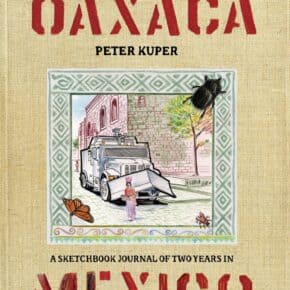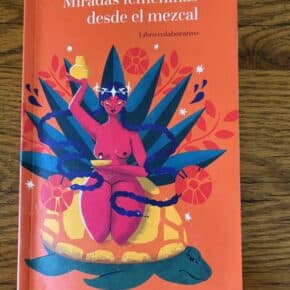This week we are re-publishing a trio of posts from the brilliant Cristina Potters at Mexico Cooks! about pulque, mezcal, and what Michoacan brings to the table. We started with pulque on Wednesday, today it’s Mexico Cooks! mezcal primer. You can find the original version of the post below here.
—
A Mezcal Primer
Sign in front of a Mexican welding shop: “We weld everything except a broken heart. For that we have mezcal.”
In case it hasn’t hit your town quite yet, a tsunami is on its way from Mexico to you. Get ready: mezcal is on the roll! Here in Mexico City and in many other areas of the country, recently ho-hum tequila is being replaced by this high-powered delight of the hundreds-of-years-old wave of the future. Many of you may already know mezcal as that bottle from Oaxaca with the worm in it, but Oaxaca is just one of the Mexican states where mezcal is produced. And just an aside: 99.999% of the time, that bottle with the worm in it is for tourists and other rank neophytes: it’s usually rotgut.
An agave atrovirens cactus–the same photo Mexico Cooks!published last week–that is used to make pulque. The maguey cactus is also the base for mezcal.
Although there are upwards of 200 varieties of maguey, relatively few of those make up the majority of mezcales. Those few are: espadín (used for 90% of all mezcal production), tobala, tobasiche, tepeztate, arroqueño, and the maguey pictured above–thecupreata which grows in Michoacán and several other states.
Mezcal is produced for personal use and for sale in all of Mexico’s 31 states, but only eight of those states have received the prized Denominación de Origen (abbreviatedDO: certification of geographic origin). The largest mezcal production in the country is in the state of Oaxaca, which in 1994 was the first Mexican state to receive itsDenominación de Origen. Today, seven other states have the certification. Most recently (in November 2012), the state of Michoacán received its DO status.
Cupreata maguey cactus in flower, near Etúcuaro, Michoacán. The flowering spike of the maguey is the quiote. A cupreata maguey plant needs eight to ten years to mature; like its cousin the common century plant, the entire plant begins to wither and die once thecupreata flowers. By day, birds pollinate the maguey. By night, bats do the same. Once the flower dies, the plant produces runners that grow into baby plants–and the life cycle of the maguey begins again.
Rocío Díaz of Michoacán, creator of the acclaimed and prize-winning video Documezcal, has graciously givenMexico Cooks! permission to use her video as a learning tool in this article. In a way that words cannot, the video gives you direct insight into artisan production of mezcal.
Mexico Cooks! recently hopped on a guajolotero (what you might think of as a chicken bus) to meet some new friends who promised to take me to meet an artisanal mezcal producer in Michoacán (west-central Mexico), where mezcal and its production are a way of life.
Every small town has at least one mezcal producer and frequently more than one; some small producers have been distilling the drink for private use for 50 years or more. Commercial production of mezcal is relatively recent; many connoisseurs consider commercial mezcales to be inferior. The good news? The best mezcal is the one you like, not the one someone–even if that someone is me–tells you to like.
Among people who drink mezcal and study its history, origins, and traditions, there is a good bit of controversy regarding its production and destinations. Until next week, I leave you with your homework: read the linked article so that you will know what the controversies are. Whether or not these matter to you is entirely up to you. Remember that the article is strictly about the mezcales of Oaxaca. Photo and article (click the link here) courtesy MezcalPhD.
Next week, we will talk about a particular mezcal from Michoacán.













Leave a Comment